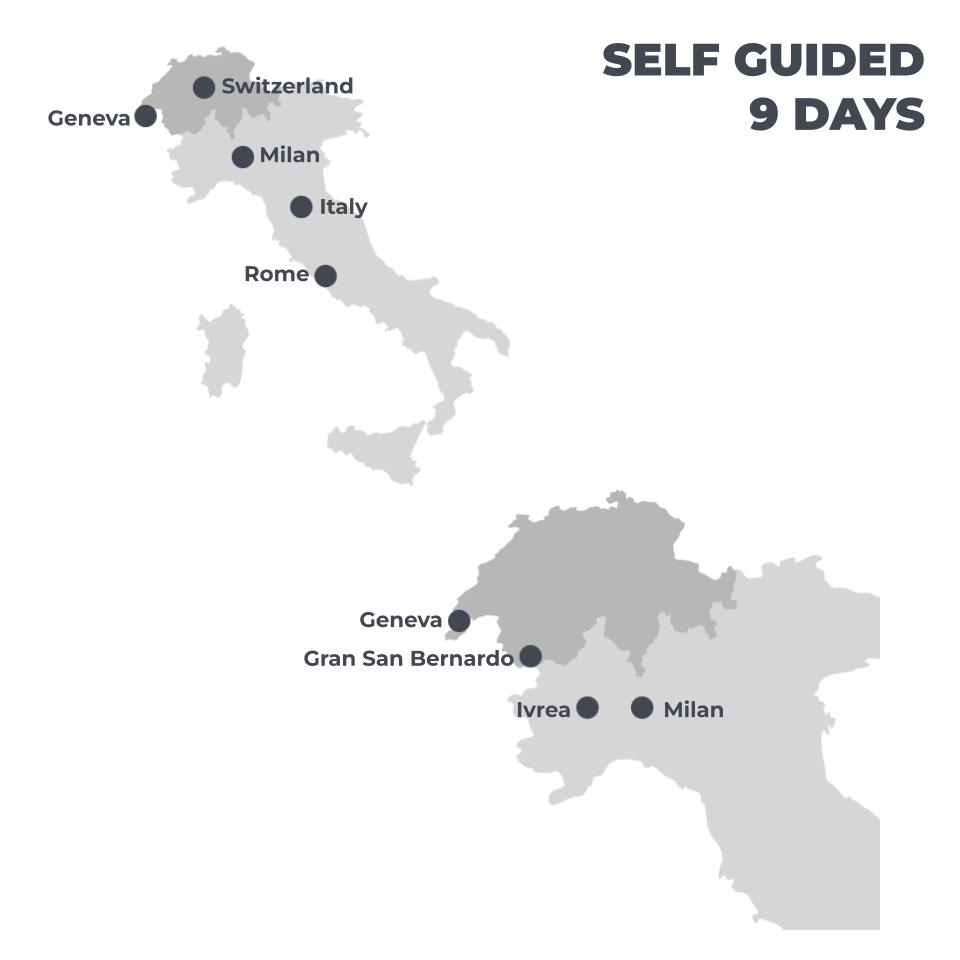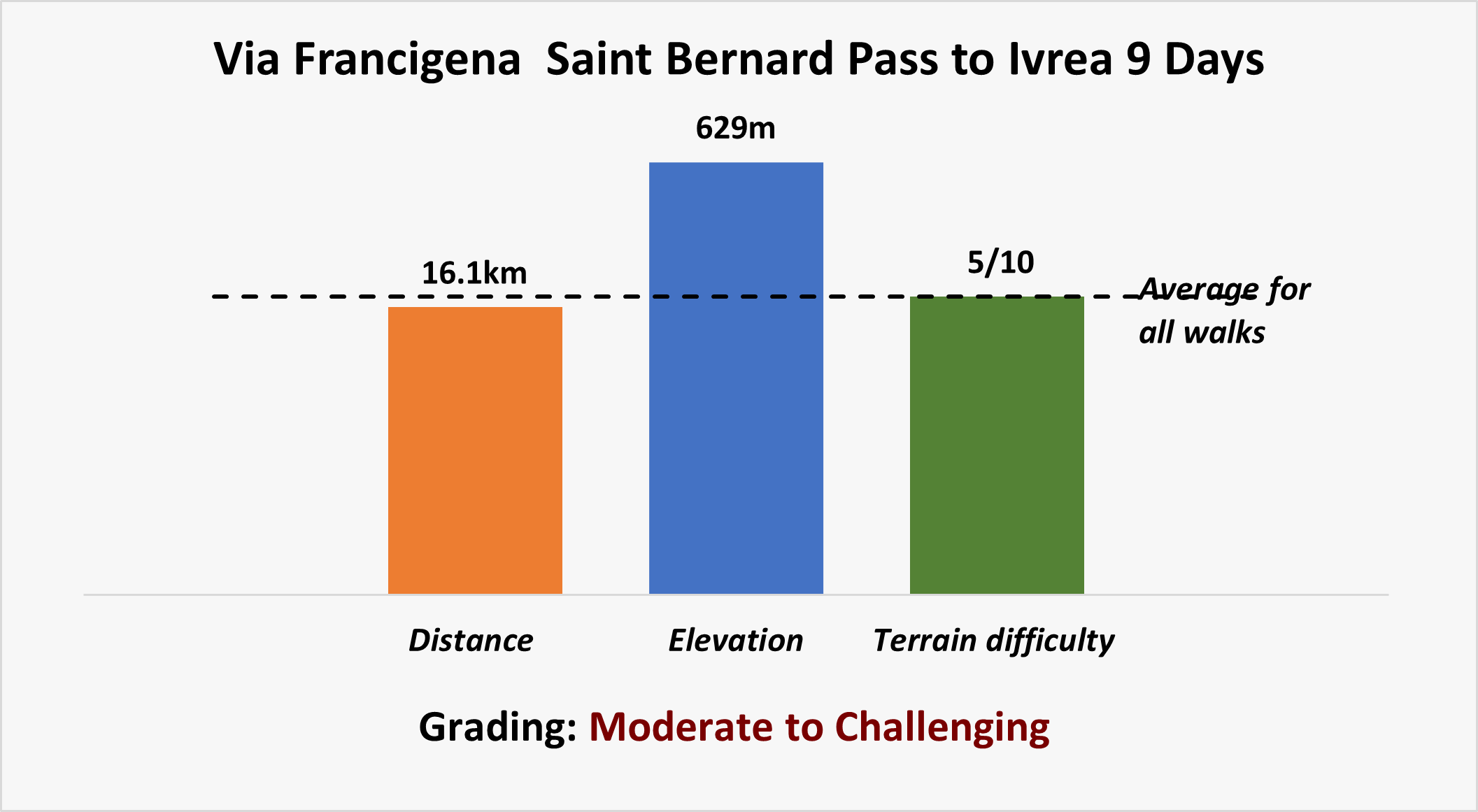FITNESS GUIDE
It’s well worth investing some time and effort preparing for your walking holiday. The graph shows the average daily distance, elevation and terrain difficulty for your hike. The dotted line indicates the average across all our walks, which will give you a feel for how challenging your walk is compared to all, and the recommended type, and amount, of preparation needed. Of course, you can adapt this according to your existing fitness levels and lifestyle.
The graph and the information below can be used in conjunction with the fitness guide to help you prepare for your walking adventure. Across all walks, average daily distance is 16.8km, average daily elevation is 448m, average terrain difficulty is 5/10.
DISTANCE - AVERAGE
Distance training is undoubtedly a consideration in your overall training program, so take every opportunity you can to walk. As you progress, incorporate longer walks into your training plan. Schedule one or two long walks each week, gradually increasing the distance until you can comfortably cover 21km in a single day. Additionally, also include back-to-back walks to simulate walking on consecutive days. This helps your body adapt to the demands of walking for multiple days in a row. Ensure you can comfortably walk the average distance per day displayed in the graph, at least one month before you undertake your hike.
ELEVATION - ABOVE AVERAGE
Elevation training is a major consideration in your overall training program. You must include walks with serious hill climbs. If you do not have access to hills, it it essential to replicate the elevation level you will be undertaking in any way possible via a treadmill or stair climber. Prioritising resistance training assumes heightened significance in this context, emphasising the incorporation of stair climbing whenever feasible. Walking up and down stairs at work, at a local oval with a grandstand, or up and down small hills, boring as that sounds, is incredibly useful. Elevation is the chief walk killer, not distance, as it uses an entirely different set of muscles. If high altitude is a factor, incorporate sessions at a higher altitude to acclimatise your body to reduced oxygen levels (this may not be possible). Ensure you can comfortably walk the average elevation per day displayed in the graph, at least one month before you undertake your hike.
UNEVEN TERRAIN:
UNEVEN TERRAIN:
Preparation for hiking on uneven terrain demands a nuanced blend of physical and mental readiness. Commence your regimen with balance-enhancing exercises, such as one-legged stands and stability ball workouts, laying a foundational groundwork for stability and coordination. Strengthening the lower body is pivotal, achieved through the incorporation of squats, lunges, and step-ups to enhance both stability and power. Gradually increase the complexity of the terrain on which you walk, moving from gravel paths to rocky trails. Cultivate mindfulness during your practice, directing focused attention to both your immediate surroundings and precise foot placement. The importance of suitable footwear cannot be overstated; prioritise options that offer robust support and reliable grip to navigate varying terrains with confidence. Build endurance through consistent hikes, progressively increasing distance and difficulty.



 SELF GUIDED
SELF GUIDED 9 DAYS
9 DAYS
 Easy to Moderate
Easy to Moderate 











Belinda E
As a solo traveller, this walk ticked all my boxes! History, scenery, no crowds, great accommodation – I wanted more of the same! I will definitely be signing up for more with Auswalks!
William T
I found AusWalk staff to always be very helpful and prompt in my requests for information or action.
Brenda H
Plans all worked well reaching departure point. The app worked effectively and route recommendations were on point. The accommodation was always a surprise package, some better than others with the hosts. Thank you Auswalk, trip was amazing and met my expectations